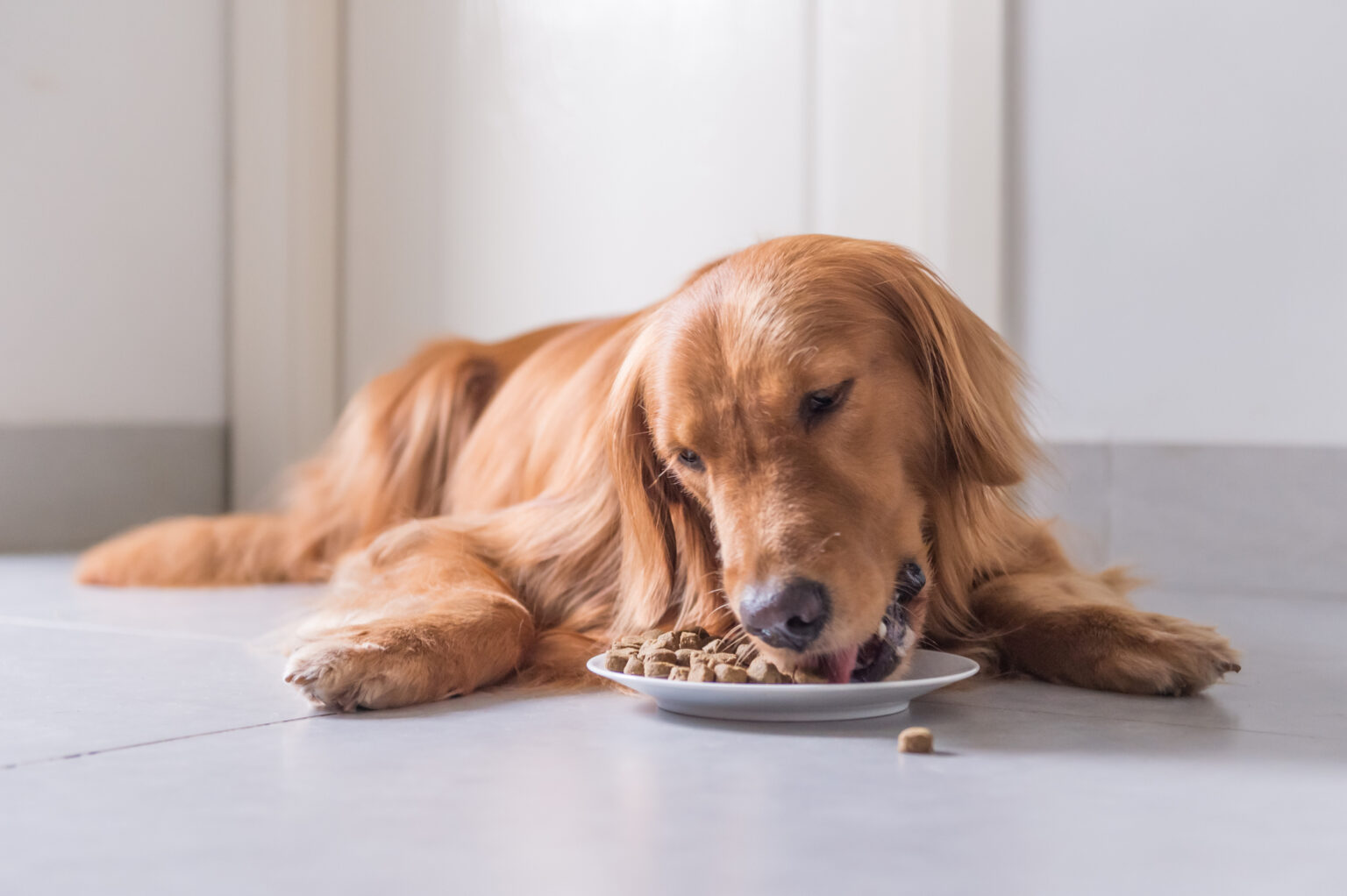1. What kind of food should I feed my dog?
It is important to consider different variables such as age, breed, body composition, gender (including whether neutered or not), temperament and activity level. In general, however, a healthy diet with high-quality ingredients will be beneficial to your dog.
Your dog’s diet needs to include the right balance of the six major nutrient groups; proteins, fats & oils, minerals, vitamins, carbohydrates and water. Most good quality pet food should provide your dog with this nutritional balance.
A breakdown of the types of food available:
Kibble (Dry food) is the most economical type of commercial dog food. It also lasts for a long time and does not need to be refrigerated. Dry dog food can also help to keep your dog’s teeth healthy, since chewing crunchy dry food helps to reduce tartar build up. When it comes to choosing a specific dry dog food, read the ingredients carefully, and choose a brand that uses wholesome ingredients.
Canned wet food has a long shelf life, and is easy to find in any supermarket, but it can be expensive. For some owners it is definitely worth the expense, but not every brand of commercial canned food provides the protein that your dog needs. The real question is how much digestible protein it provides. Indigestible protein will pass through your dog’s system without being broken down into absorbable nutrients, so it’s more or less useless to him. Also, most canned dog food is about 75 percent water. The higher the water content, the less nutritious, meaning your dog will consume more food. If you decide to feed your dog canned food, it’s best to go with a kind that’s labelled “100% nutritionally complete” (US brands) or “complete and balanced” (UK/European brands).
Semi-moist dog food is commercial food shaped like pork chops, burgers, or other meaty foods. These kinds of foods are the least nutritional of all dog foods and contain many artificial flavours and colourings. They can be given to your dog as an occasional treat, but they should not be considered a diet in themselves, as they do not provide the nutrition that your pooch requires.
Home-cooked food. Some dog owners value the ability to be in complete control of their dog’s diet. Feeding your dog a home-cooked diet is time-consuming and expensive, but many owners think the extra effort is worth the peace of mind they gain. If you decide to feed your dog a home-cooked diet, research canine nutrition so you can be sure your dog is not missing out on any vital nutrients.
A raw diet consists of raw meat, preferably with some bones (never cooked bones, only raw) and organs mixed in, as bones are a natural source of phosphorus and calcium. This type of diet works well for many dogs, since dogs have short intestinal tracts and strong stomach acids, both of which make it easy for them to consume and digest raw food. However, it can be quite time consuming, and there is a risk of dietary imbalances, causing broken teeth on bones, and food poisoning. Before changing your dog to a raw diet, talk to your veterinarian about the risks and benefits.
Veterinary diets. There are an increasing number of diets that have been formulated especially to support dogs with various conditions, such as renal failure, liver disease, or urinary disease. These work by controlling the amount of particular nutrients within the food that affects the condition in question – for example restricting the amount of protein in a renal diet so that the kidneys have less work to do in excreting protein by-products. These should only be fed on recommendation from your veterinary surgeon, as in some cases they can cause harm to a dog without special requirements.
If your dog has any specific health problems or if you are in any doubt as to its feeding requirements we recommend you consult your veterinarian.
2. Should I avoid economy brands of dog food?
As with many consumer products, you get what you pay for. Economy brands of dog food are made from the cheapest ingredients available. Their energy values are lower, their proteins are lower-grade, and they contain higher levels of “filler” ingredients. Therefore, much of the food passes through your dog without being digested or absorbed.
3. What are the benefits of premium brands of dog food?
Premium brands of dog food use higher-quality ingredients from sources with higher biological values. This means better digestibility; therefore your dog will not need to eat as much and will produce less waste.
4. Is dry food better than wet food?
Dry dog food has definite benefits. It is easier to store and serve. It also has less of an odour and is less likely to spoil when left in the dog’s bowl. Dry dog food also reduces the build-up of tartar when chewing and is often a cheaper alternative. Wet dog food may be beneficial for dogs that need to increase their water intake. If in doubt, always ask your veterinarian.
5. Can I mix dry food with canned food?
It is not advisable to mix wet and dry food especially if you are feeding your dog a special diet. Always consult your veterinarian for advice regarding the best diet choice for your dog.
6. Should I feed my dog semi-moist foods?
Semi-moist foods, although convenient, generally have a high level of sugar and are not good sources of nutrition for dogs. They can also contribute to dental disease. In addition, semi-moist foods often contain a number of artificial colours and preservatives.
7. How should I feed my puppy?
Puppies have little tummies, and generally need to be fed little and often. Four times a day is sufficient from weaning to four months old, then three times daily until he is six months, at which time the frequency can be reduced to twice a day for the rest of his life. It is very important for puppies to have a diet balanced in omega fatty acids, phosphorus and calcium, so a commercial puppy food is best, as these are developed especially for puppies’ needs. Large breed puppies grow very quickly, causing strains on their growing bones and joints. Diets aimed at large breed puppies are formulated to help to minimise potential joint problems. Check with the breeder about what the puppy was fed on during weaning, as it is best to gradually wean the puppy off this food rather than introducing an abrupt change to a new diet.
8. What types of food shall I feed my senior dog?
The senior dog requires a well-balanced diet that is lower in calories, with adequate protein and fat, and high in fibre. For some older dogs, we continue to feed them regular food, but in a smaller quantity. Specially formulated senior diets are lower in calories and help to create a feeling of fullness. If your dog has significantly decreased kidney function, then a diet that is lower in protein will lower the workload for the kidneys. Lower fat usually translates to lower calories; so many senior diets have a fat level of around 8 to 12%. Older dogs are more prone to constipation, so senior diets are higher in fibre at around 3 to 5%. Wheat bran can be added to regular dog food to increase the amount of fibre. If your older dog will eat dry food, it will help to control tartar build-up and reduce the risk of gum disease.



